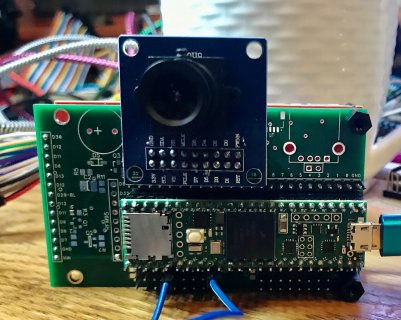joey120373
Well-known member
I started playing around with A T4 and the adafruit 2.8inch TFT with cap touch.
I am running the scroll demo in the examples folder, as I intend to build a “hyper term”
Like serial monitor that will also display other data about the incoming serial stream, having one port or of the screen scroll, while another part just updates text, this example code is a perfect starting point.
Using some 6 inch DuPont jumpers, I was able to get my SPI transmit clock to 60000000, and the same for the SPI read.
Happy with that, I called it a day. Next morning I started working on it again and it wouldn’t work, white screen of death as it were. I had to back the clock back to 40Mhz to get it working again.
So, I soldered the teensy to the display with just about as short a wire as I could, maybe 1.5 inches (40mm) or so.
What a difference that made! I am now running at 100Mhz on SPI write, and 70Mhz on read.
I am wondering if anyone else has played around with this and what rates they are getting?
Joe
I am running the scroll demo in the examples folder, as I intend to build a “hyper term”
Like serial monitor that will also display other data about the incoming serial stream, having one port or of the screen scroll, while another part just updates text, this example code is a perfect starting point.
Using some 6 inch DuPont jumpers, I was able to get my SPI transmit clock to 60000000, and the same for the SPI read.
Happy with that, I called it a day. Next morning I started working on it again and it wouldn’t work, white screen of death as it were. I had to back the clock back to 40Mhz to get it working again.
So, I soldered the teensy to the display with just about as short a wire as I could, maybe 1.5 inches (40mm) or so.
What a difference that made! I am now running at 100Mhz on SPI write, and 70Mhz on read.
I am wondering if anyone else has played around with this and what rates they are getting?
Joe


